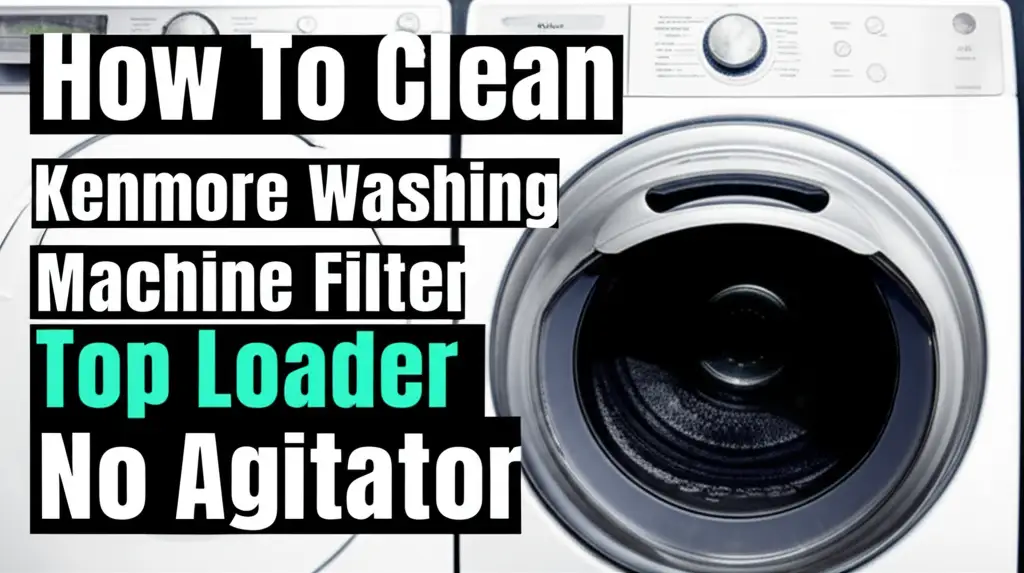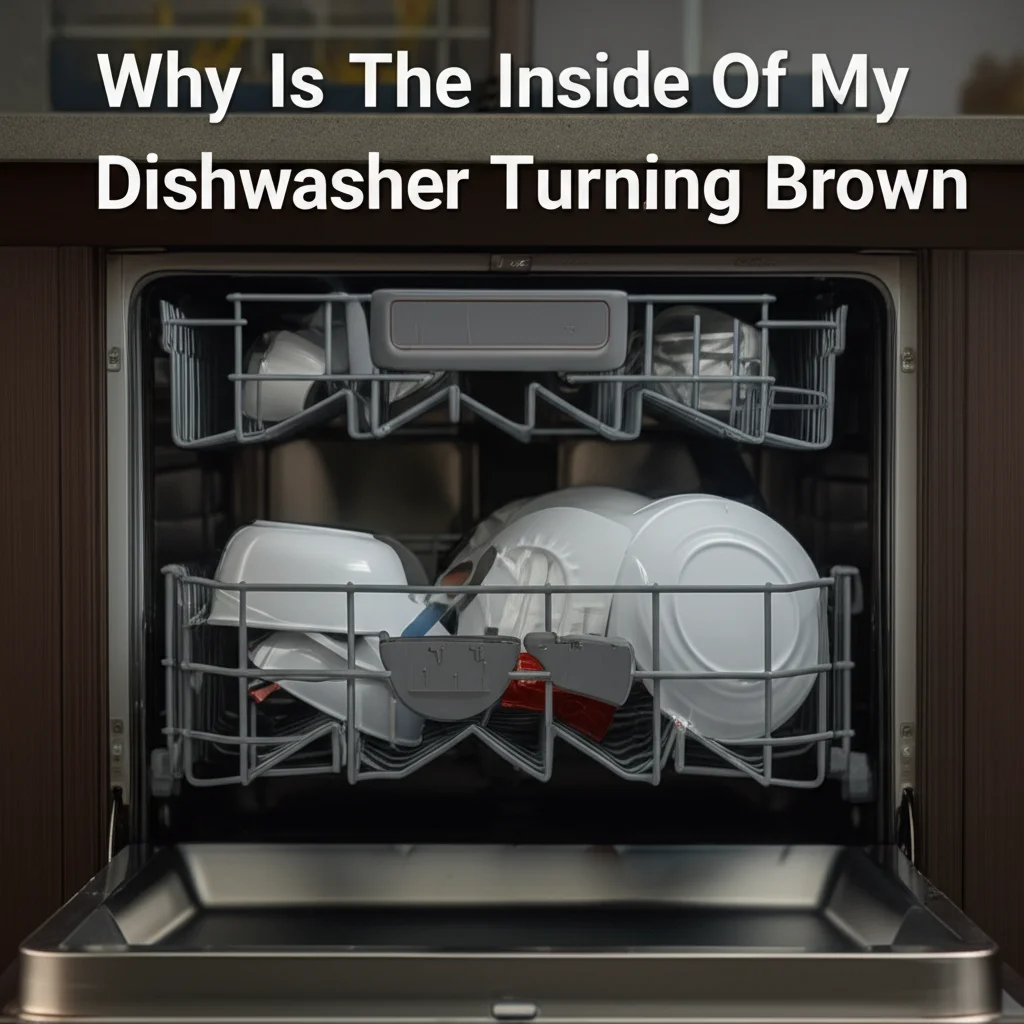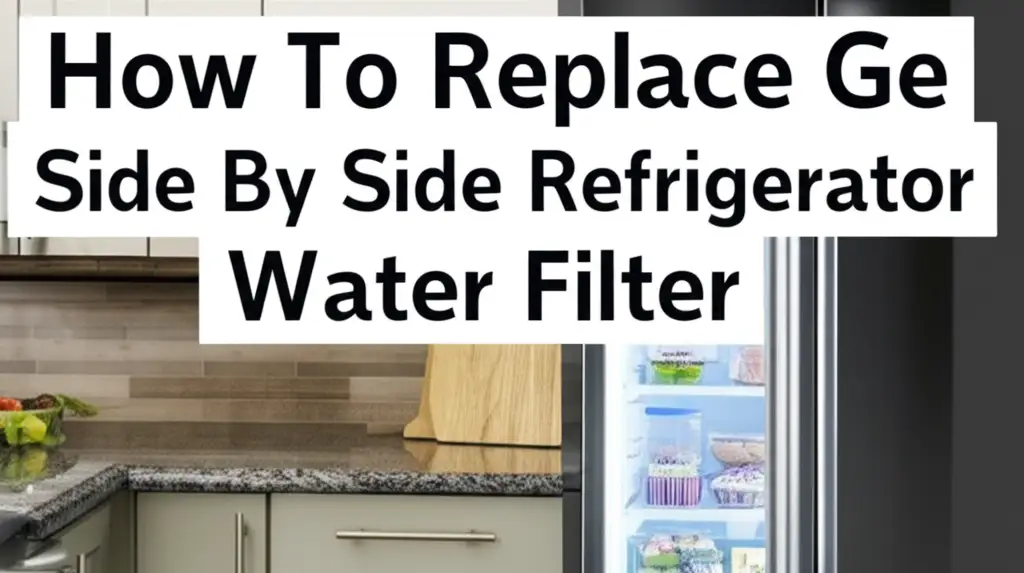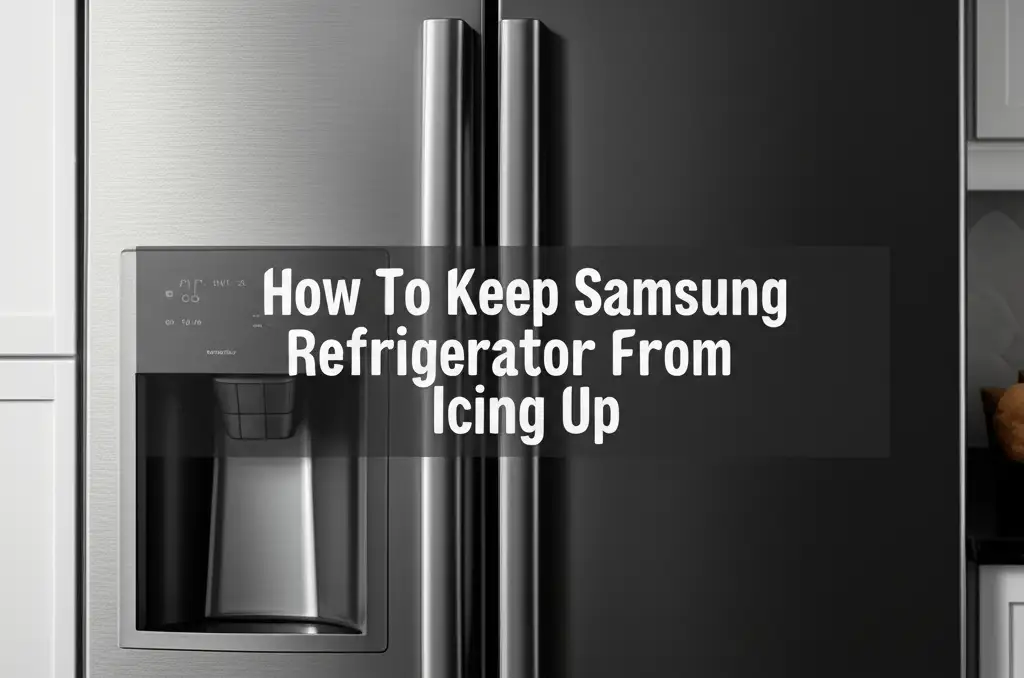· Todd Martin · Appliance Maintenance · 17 min read
How To Clean Kenmore Washing Machine Filter Top Loader No Agitator

Clean Kenmore Top-Loader Filter: No Agitator Guide
Are you noticing strange odors from your laundry, or perhaps your clothes are not getting as clean as before? A hidden culprit might be a clogged filter in your Kenmore top-loader washing machine. Many modern Kenmore top-loaders do not have a central agitator. They use an impeller instead. These machines still have filters that capture lint, debris, and small items. Learning how to clean Kenmore washing machine filter top loader no agitator is essential. This guide helps you restore your machine’s performance and keep your laundry fresh. We will explore filter locations, required tools, and a step-by-step cleaning process. You will also learn maintenance tips.
Takeaway
Cleaning your Kenmore top-loader washing machine filter (no agitator) maintains its efficiency. You will need simple tools. The process involves safely accessing the filter, removing debris, cleaning thoroughly, and reassembling correctly. Regular cleaning prevents odors and drainage issues.
To clean your Kenmore washing machine filter (no agitator):
- Turn off power and water supply to the washer.
- Locate the filter, often near the drain pump behind an access panel.
- Drain any residual water.
- Carefully remove the filter.
- Rinse the filter under warm water to remove lint and debris.
- Use a small brush for stubborn grime.
- Clean the filter housing.
- Reinsert the clean filter and secure the access panel.
- Restore power and water, then run a test cycle.
Clear Answer
Cleaning a Kenmore top-loader filter (no agitator) involves locating the filter (often near the pump or water inlet), carefully removing it, rinsing debris under warm water, scrubbing stubborn grime, and reinserting it. This prevents clogs and ensures efficient machine operation.
Why Filter Cleaning Matters for Kenmore Top-Loaders (No Agitator)
Modern Kenmore top-load washing machines without agitators use different washing actions. They rely on impeller technology. This technology moves clothes through the water more gently. These washers are often called High-Efficiency (HE) models. They use less water than traditional agitator models. This reduced water usage makes the filter even more important. The filter catches lint, hair, and small objects that fall from clothing. These items include coins, buttons, or even pet hair.
A dirty filter can cause many problems. It reduces the machine’s ability to drain water properly. This leads to standing water in the tub. Standing water encourages mold and mildew growth. Mold and mildew produce foul odors. These odors can transfer to your clean laundry. I have experienced this myself. My clothes started smelling musty even after washing. This was a clear sign I needed to check the filter. A clogged filter also makes the machine work harder. This can lead to increased energy consumption. It can also cause premature wear on the pump motor.
Ignoring the filter can result in poor wash performance. Your clothes might not get truly clean. You might see lint or debris left on them. The washing machine could display error codes. These codes often indicate drainage issues. A simple filter cleaning can solve these problems. It restores your Kenmore top-loader’s efficiency and helps it last longer. Regular maintenance is key for any appliance. Cleaning the filter is a simple step in maintaining your washing machine. You can learn more about general washing machine filter maintenance at how to clean washing machine filter. This routine helps prevent bigger problems later.
Identifying Your Kenmore Top-Loader’s Filter Location
Finding the filter on a Kenmore top-loader without an agitator can be tricky. It is not always in an obvious spot. Many people expect to find it inside the drum, like older models. However, modern Kenmore HE top-loaders usually place their filters elsewhere. The most common location is near the drain pump. This pump is usually at the bottom front of the machine. Sometimes it is behind a small access panel. This panel might be a small door or a removable kick plate. You might need to gently pry it open.
Another possible location is inside the wash tub itself. Some Kenmore models have a small, removable lint trap. This trap could be on the rim of the tub. It might also be integrated into a central post, even without a full agitator. These types of filters often look like small mesh screens. They are designed to be easily pulled out and rinsed. I remember looking for my filter for hours. I finally found it behind the kick plate. My owner’s manual was very helpful in that situation.
A less common spot for a filter is near the water inlet hoses. This type of filter catches sediment from your water supply. It protects the machine’s internal components. This filter is typically a small screen inside the hose connection point. You will need to disconnect the water hose to access it. Always check your specific Kenmore washer’s owner’s manual. The manual provides the exact location and instructions for your model. It is the best resource for accurate information. If you do not have the manual, you can often find it online. Just search using your Kenmore model number. Understanding the overall maintenance of your top loader can also help. Visit how to clean top-loader washing machine for more tips.
Essential Tools and Safety Before You Start Cleaning
Before you begin cleaning your Kenmore washing machine filter, gather the right tools. Proper preparation ensures a smooth and safe cleaning process. You will need a few common household items. First, get several old towels or rags. These will absorb any water that spills during the filter removal. A shallow bucket or pan is also important. This catches residual water that drains from the filter housing. A small brush, like an old toothbrush or a bottle brush, helps scrub stubborn grime from the filter mesh. You might also need a pair of pliers or a screwdriver, depending on how your specific filter is secured. Some filters twist out easily. Others require a tool to loosen.
Safety is paramount when working with any appliance. Your washing machine uses both electricity and water. Therefore, always disconnect the power supply first. Unplug the machine from the wall outlet. This prevents accidental startups. It eliminates the risk of electrical shock. Next, turn off the water supply valves. These are usually located behind the washing machine. They are connected to the hot and cold water hoses. Turning them off prevents water flow. This also prevents leaks during the cleaning process. If you forget this step, you could have a big mess.
Once power and water are off, prepare the area. Lay down your towels around the base of the machine. Especially focus on the area where you expect to access the filter. This protects your floor from water spills. Many washers will have some water remaining in the drain hose. This water will come out when you open the filter. Having towels ready makes cleanup easy. Taking these simple safety steps protects you and your home. Using natural cleaners like vinegar can also be part of your cleaning strategy. Learn more at how to clean washing machine with vinegar.
Step-by-Step Guide to Cleaning Your Kenmore Filter
Cleaning your Kenmore washing machine filter (no agitator) involves a few clear steps. Follow these instructions carefully. This ensures you clean the filter effectively and safely. The process largely depends on where your filter is located. Most modern Kenmore top-loaders without agitators have a filter near the drain pump.
Accessing the Pump Filter (Common for No Agitator)
First, make sure your machine is unplugged. Ensure the water supply is off. Locate the access panel. This is usually at the bottom front of the washer. It might be a small door or a removable kick plate. You may need to gently pry it open with a flat-head screwdriver. Some panels have clips. Others use screws. Once the panel is open, you will see the drain pump. The filter usually looks like a large cap or knob on the pump housing.
Place your shallow bucket and towels directly beneath the filter cap. Residual water will drain out when you open it. Turn the filter cap counter-clockwise to loosen it. It might be tight. A pair of pliers can help if it is too stiff. Be careful not to force it. As you loosen it, water will start to flow out. Let all the water drain into your bucket. Once the water stops, you can fully unscrew and pull out the filter. It might be slimy or covered in lint.
Cleaning the Filter Element
Now that you have the filter out, it is time to clean it thoroughly. Take the filter to a sink. Rinse it under warm running water. Use strong water pressure to flush away loose lint and debris. You will often find hair, pet fur, and small objects like coins or buttons. My own filter had several hair ties and a missing sock once! Use your small brush, like an old toothbrush, to scrub the mesh screen. Get into all the crevices. Remove any stubborn grime or detergent residue.
If the filter is very dirty or has a foul odor, soak it. Fill a small basin with warm water. Add a few drops of dish soap. You can also use a mixture of equal parts white vinegar and water. Let the filter soak for 15-30 minutes. This helps loosen tough buildup. After soaking, rinse it again. Make sure all debris is gone. Inspect the filter carefully. Look for any damage, cracks, or tears in the mesh. A damaged filter needs replacement.
Cleaning the Filter Housing
Do not forget to clean the cavity where the filter sits. Use a damp cloth or sponge to wipe inside the opening. This removes any accumulated sludge or debris. Shine a flashlight into the opening. Check for any blockages deeper inside the drain hose. Sometimes, large items might get past the filter and block the hose. If you see a blockage, you might be able to reach it with small tongs. Be gentle. This area leads directly to your drain pump. Keeping this housing clean is just as important as cleaning the filter itself. Cleaning the overall top loader can be done with similar methods. Refer to how to clean washing machine top loader for more details.
Reassembling and Testing Your Kenmore Washer
After you have thoroughly cleaned the filter and its housing, reassembly is the next step. This process is generally the reverse of disassembly. It requires attention to detail. Proper reassembly prevents leaks and ensures your Kenmore washer functions correctly.
First, make sure the filter element is completely clean and dry. There should be no remaining lint or debris. Check the rubber gasket or O-ring on the filter cap. This gasket provides a watertight seal. Ensure it is clean and not twisted or damaged. A damaged gasket can cause leaks. If it looks cracked or worn, you might need to replace it. Insert the clean filter back into its housing. Turn it clockwise to tighten it. It should screw in smoothly. Do not overtighten it. Hand-tightening is usually sufficient. Some filters have an arrow or indicator mark. Align this mark to ensure correct positioning.
Once the filter is securely in place, close the access panel. Make sure it latches or screws back into place firmly. A loose panel can create vibrations. Now, reconnect the water supply hoses. Turn the hot and cold water valves back on. Ensure the connections are tight. Then, plug the washing machine back into the electrical outlet.
Before doing a full load of laundry, run a test cycle. I always do a quick rinse and spin cycle. This allows you to check for any leaks. Watch the area around the filter access panel closely. Look for any drips or puddles. If you see water, immediately unplug the machine. Then, re-check the filter and its gasket. Make sure they are properly sealed. A short test cycle also verifies that the machine drains water correctly. If everything looks good, your Kenmore washer is ready for laundry. For general top-loader deep cleaning tips, see how to deep clean washing machine top loader. This ensures your machine is ready for peak performance.
Preventing Future Clogs and Maintaining Kenmore Performance
Regular maintenance is key to keeping your Kenmore top-loader (no agitator) running smoothly. Preventing clogs is easier than cleaning them. I always try to follow these steps. They help maintain machine performance.
Establish a cleaning schedule for your filter. For most households, cleaning the Kenmore washing machine filter every 3 to 6 months is sufficient. If you have pets that shed a lot, or if you wash heavily soiled items frequently, consider cleaning it more often. Quarterly or even monthly cleaning might be necessary. A regular schedule prevents lint and debris from building up.
Always check pockets before washing clothes. Small items like coins, paper clips, hairpins, and keys are common culprits. They can fall out during the wash cycle. These items can damage the filter. They can also cause blockages in the drain pump. I found my son’s small toys in the filter once. Now, I always check pockets first. This simple habit saves a lot of trouble.
Use the correct amount of detergent. High-efficiency (HE) washers require HE detergent. Using too much regular detergent creates excessive suds. These suds can leave behind residue. This residue builds up in the filter and hoses. It can also cause odors. Read your detergent instructions carefully. Follow the recommended dosage. Avoid overloading your washing machine. Overloading prevents clothes from moving freely. This reduces cleaning efficiency. It also puts strain on the machine’s components. An overloaded machine can produce more lint. This lint then has to go somewhere, often into the filter.
After each wash cycle, leave the washer door or lid open for a while. This allows the drum to air out. It helps moisture evaporate. Evaporation prevents the growth of mold and mildew. Mold and mildew are common sources of bad odors. These smells can then transfer to your clothes. You can also run a monthly cleaning cycle. Many Kenmore washers have a “Clean Washer” or “Tub Clean” cycle. Use this cycle with a specialized washer cleaner. You can also use a mixture of white vinegar and baking soda. This deep cleans the drum and hoses. It flushes away detergent residue and odor-causing bacteria. To combat strong odors and mold, refer to how to clean mold from washing machine for detailed steps. These practices extend your machine’s life. They also ensure clean and fresh laundry every time. You can learn more about general internal cleaning at how to clean your washing machine inside.
Troubleshooting Common Issues After Filter Cleaning
You have cleaned your Kenmore washing machine filter. Now, you expect perfect performance. However, sometimes issues can persist. It is important to know how to troubleshoot common problems. This helps you determine if the filter was truly the cause.
One common issue is leaks. If you see water leaking from the bottom of your Kenmore washer, it often means the filter was not reinstalled correctly. The filter cap might be loose. The rubber gasket (O-ring) might be pinched or damaged. Immediately unplug the machine. Then, re-open the access panel. Carefully re-seat the filter. Ensure the gasket is flat and properly positioned. Tighten the cap securely. Run another short test cycle to confirm the leak is gone.
Another problem might be clothes still appearing dirty. If your clothes are not getting clean, or still have lint, the filter might not be the only issue. Check your detergent usage. Are you using enough HE detergent? Are you overloading the machine? Too many clothes prevent proper water circulation. Your water temperature settings also matter. Cold water may not dissolve certain stains or detergents effectively. Hard water can also affect cleaning performance. You might need a water softener if your area has very hard water.
If your Kenmore washer is still not draining water, the problem might be deeper. The filter could be clean, but a blockage might exist further down the drain hose. Sometimes, an object might bypass the filter and get stuck. Inspect the entire drain hose for kinks or clogs. Disconnect the hose from the wall drain. Look inside with a flashlight. You might need to clear a blockage manually. If the pump makes unusual noises but no water drains, the drain pump itself might be failing. This often requires professional repair.
Persistent error codes also point to deeper problems. If your washer continues to display drainage or fill errors after filter cleaning, consult your owner’s manual. The manual provides specific meanings for error codes. It offers troubleshooting steps. If these steps do not work, the issue could be with the water pump, a sensor, or the control board. In such cases, it is best to contact Kenmore service. A professional technician can diagnose and fix complex problems. They have the specialized tools and knowledge needed. Knowing when to call a professional saves time and prevents further damage. Kenmore washers share some characteristics with other brands. You might find some parallels in troubleshooting with a similar model, like a GE top loader without an agitator. See how to clean GE washing machine top loader no agitator for comparative tips.
Frequently Asked Questions
Q1: How often should I clean my Kenmore no-agitator washer filter?
I recommend cleaning your Kenmore top-loader filter every three to six months. If you have pets or frequently wash dirty items, clean it quarterly. Heavy use or pet hair can clog the filter faster. Regular cleaning prevents performance issues and keeps your laundry fresh.
Q2: What happens if I do not clean the washing machine filter?
Ignoring the filter leads to issues. Your machine may drain slowly or not at all. This leaves standing water. You might notice foul odors on your clothes or from the machine. The washer may display error codes. Clogs can also damage the drain pump over time.
Q3: Can a clogged filter cause a Kenmore washer to smell?
Yes, absolutely. A clogged filter traps lint, dirt, and detergent residue. This creates a moist environment. Mold and mildew thrive in such conditions. These growths produce unpleasant, musty odors. The odors then transfer to your laundry. Regular cleaning eliminates these odor sources.
Q4: Is there a filter on all Kenmore top-loader washers without agitators?
Most Kenmore top-loaders without agitators (impeller models) have a filter. These filters are often located near the drain pump or sometimes in the wash tub. Always consult your specific model’s owner’s manual to confirm the filter location and type.
Q5: What cleaning solutions are safe for my Kenmore washer filter?
Warm running water is usually enough for the filter. For stubborn grime, use mild dish soap or a solution of equal parts white vinegar and water. Avoid harsh chemicals or abrasive cleaners. These can damage the filter material or the rubber seals.
Q6: My Kenmore washer still has issues after cleaning the filter. What is wrong?
If problems persist, the issue might be elsewhere. Check for blockages in the drain hose itself. Ensure proper detergent usage and load size. The drain pump might be failing, or there could be a sensor or control board issue. Consider contacting a professional technician for complex problems.
Conclusion
Cleaning the Kenmore washing machine filter on your top-loader with no agitator is a vital maintenance task. It might seem daunting at first, but it is a simple process. Regular filter cleaning ensures your Kenmore washer runs efficiently. It helps your clothes come out fresh and truly clean. We covered why cleaning matters, where to find the filter, and how to safely clean it. We also discussed how to prevent future clogs.
I encourage you to make filter cleaning a regular part of your home maintenance routine. This small effort yields big benefits. It extends the life of your Kenmore appliance. It prevents frustrating laundry problems. Keep your Kenmore washing machine filter top loader no agitator free from debris. Your washer will thank you with years of trouble-free service. Take action today. Keep your laundry spotless and your machine in top shape.
- Kenmore washing machine
- washing machine filter
- top loader
- no agitator
- washer maintenance
- appliance cleaning
- laundry care
- Kenmore washer





